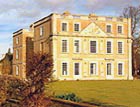Foreword by HRH Prince Charles
HRH Prince Charles talks of his pride in the National Trust's work and also of its challenges for the future in his foreword to Country Life's dedicated National Trust issue out April 5


It has given me enormous pleasure and pride to be President of the National Trust for the last four years and before that its Vice President for seven years. The centenary of the National Trust Act of 1907 provides an opportunity to reflect on the role of the Trust, and all that it has achieved since its inception. It has flourished as an independent charity, grown surely beyond the wildest dreams of its Founders and, in doing so, has enabled the public to have access to thousands of beautiful and remarkable properties. The Act, which gave the Trust the legal power to hold a property for 'permanent preservation for the benefit of the nation', began the National Trust's extraordinary journey from a small acorn to the Great British institutional oak it is today. I would like to pay a special tribute to the members and thousands of volunteers and staff who have so far made this possible, and to the many generous benefactors who have endowed their land and properties to the Trust's careful and caring stewardship. Reaching such a milestone also provokes contemplation about the opportunities and challenges that will present themselves as we settle into the twenty-first century. Through the Trust, we must continue to emphasise the importance of preserving and conserving the best of our heritage for future generations. Although today we see an increased appreciation of precious landscape and architecture, clearly demonstrated by the Trust's ever-increasing membership and the success of recent campaigns like History Matters, the Trust's role is more vital than ever, with so much of our natural and built environment under threat. We must ensure that responsible, sustainable choices are made. After a century, the National Trust must also reflect on the meaning of that now over-used term, sustainability. In its custodianship of landscapes and historic buildings large and small, the Trust is particularly well-placed to celebrate those timeless qualities of craftsmanship and harmony between man and Nature ? the qualities of beauty ? that create accumulating value over generations. I can only pray the Trust will continue to consider these touchstones as it develops its estates, and when building anew, just as much as when restoring our heritage. The Trust itself must be protected from decline so that it can continue to develop and expand its important work. This, of course, has a financial cost and funding will inevitably be a challenge in the years to come. Many of the National Trust's properties are as fragile as they are beautiful and the Trust needs the financial strength to preserve land and buildings threatened by development or neglect. Thi si san important time in the National Trust's history and we must honour the legacy of the Founders by continuing to think in terms of the decades and centuries ahead ? indeed, in perpetuity. I hope that, like me, you will have the opportunity to explore the variety of beautiful places in its care and, as a result, perhaps be moved to support the work of the National trust in preserving the best of our heritage for the centuries to come.
Sign up for the Country Life Newsletter
Exquisite houses, the beauty of Nature, and how to get the most from your life, straight to your inbox.
Country Life is unlike any other magazine: the only glossy weekly on the newsstand and the only magazine that has been guest-edited by HRH The King not once, but twice. It is a celebration of modern rural life and all its diverse joys and pleasures — that was first published in Queen Victoria's Diamond Jubilee year. Our eclectic mixture of witty and informative content — from the most up-to-date property news and commentary and a coveted glimpse inside some of the UK's best houses and gardens, to gardening, the arts and interior design, written by experts in their field — still cannot be found in print or online, anywhere else.
-
 Vertigo at Victoria Falls, a sunset surrounded by lions and swimming in the Nile: A journey from Cape Town to Cairo
Vertigo at Victoria Falls, a sunset surrounded by lions and swimming in the Nile: A journey from Cape Town to CairoWhy do we travel and who inspires us to do so? Chris Wallace went in search of answers on his own epic journey the length of Africa.
By Christopher Wallace Published
-
 A gorgeous Scottish cottage with contemporary interiors on the bonny banks of the River Tay
A gorgeous Scottish cottage with contemporary interiors on the bonny banks of the River TayCarnliath on the edge of Strathtay is a delightful family home set in sensational scenery.
By James Fisher Published
